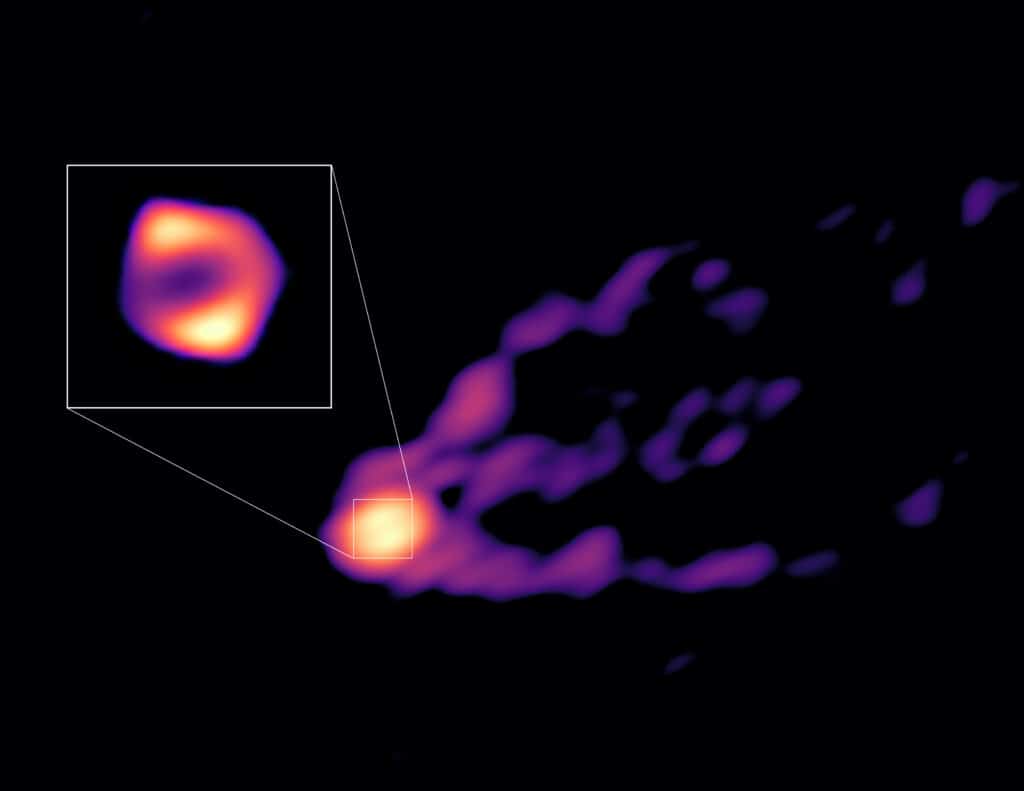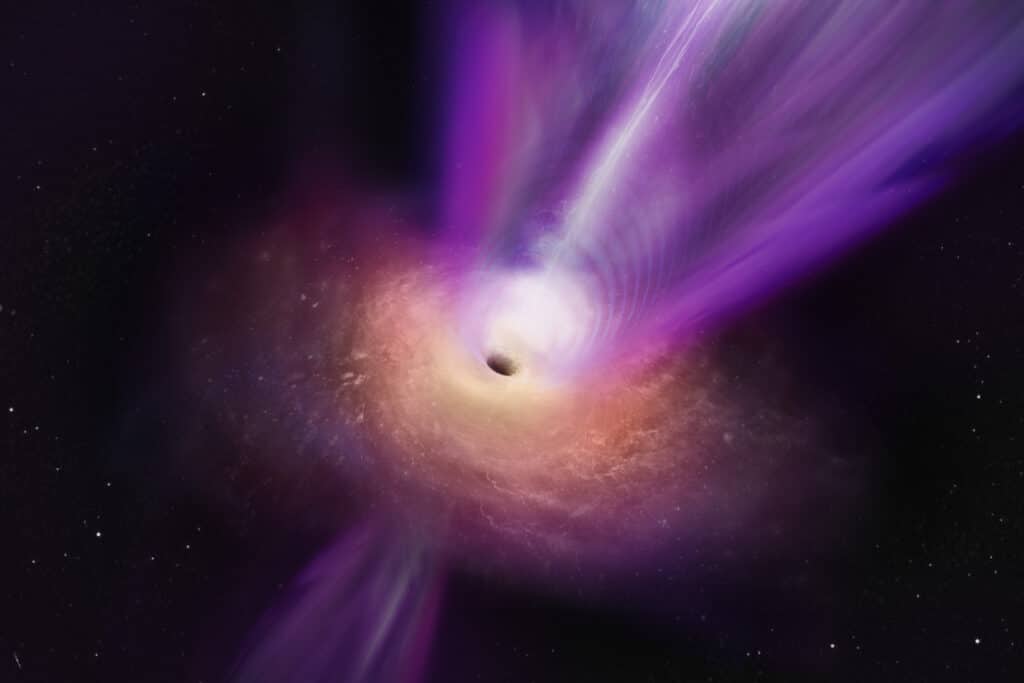Astronomers have captured images of a supermassive black hole’s glowing, fluffy ring for the first time. These awe-inspiring photos will help physicists understand the impact of the plasma on its surroundings.
An international team combined observations from the Global Millimetre VLBI Array (GMVA), ALMA (Atacama Large Millimetre/submillimetre Array) in Chile, the Greenland Telescope (GLT), and the EHT (Event Horizon Telescope). This collaboration allowed them to examine the black hole, first identified six years ago, from a more “zoomed-out” perspective.
Deciphering the Black Hole’s Features
“This is the first image where we are able to pin down where the ring is – relative to the powerful jet escaping out of the central black hole,” explains Kazunori Akiyama, a research scientist at the Massachusetts Institute of Technology, in a statement.
With this information, scientists can now delve deeper into questions about particle acceleration, heating, and other black hole mysteries.
The supermassive black hole is situated 55 million light years away in a galaxy named M87. In 2019, it made headlines as the first black hole to be pictured, closely resembling theoretical predictions. The initial image revealed a golden ring of material racing around the outer edge, called the event horizon. Now, this “curtain” has been drawn back to expose a thicker, fluffier ring that is 50% larger.

Imaging Techniques and Equipment
The GMVA’s resolution was adjusted to detect more of the super-hot, glowing gas surrounding the black hole. Part of the gas originates from a surrounding accretion disk, where white-hot electrons are heated to hundreds of billions of Kelvin as the plasma streams into the black hole. The images also display plasma blasting out from the central ring in the form of a bright beam of matter, known as a relativistic jet.
Scientists used a technique called very-long-baseline interferometry (VLBI) to track these emissions back to the black hole and observe the base linked to the central ring. This method involves collecting radio signals from black hole plasma emissions using radio dishes worldwide. Scientists can then synchronize the dishes to function as one large, planet-scale telescope.
Expanding the Array and Future Research
To create a truly planet-sized telescope capable of capturing distant radio signals from M87, astronomers expanded the array’s “eye” to the north and south. ALMA, an array of 66 radio dishes in the Atacama Desert, was synchronized to serve as a powerful and essential part of the GMVA network.
Dr. Lynn Matthews, of MIT, said, “Having these two telescopes as part of the global array resulted in a boost in angular resolution by a factor of four in the north-south direction. This greatly improves the level of detail we can see. And in this case, a consequence was a dramatic leap in our understanding of the physics operating near the black hole at the center of the M87 galaxy.”

These coordinated efforts produced images revealing a larger, fluffier ring of plasma surrounding the black hole, as well as plasma trailing up and out from the central glowing ring. The scientists plan to further investigate the black hole’s plasma properties, such as temperature profile and composition, by tuning the EHT and GMVA to new resolutions and observing M87 at multiple wavelengths.
Geoffrey Crews, a research scientist at MIT, said, “If something major happens in the world, you might tune in to both AM and FM to assemble a ‘complete picture’ of the event. This is no different. You might think of the EHT M87 image being made in FM, and this result coming from AM. Both tell a story, and together it is a better story.”
Supermassive black holes reside at the center of every galaxy, including the Milky Way, and may even create them. The study is published in the journal Nature. With these advancements in imaging technology and ongoing research, scientists hope to continue unraveling the mysteries surrounding black holes and their impact on the universe.
The research papers behind M87 is published in the journal Nature.
South West News Service writer Mark Waghorn contributed to this report.












Comments